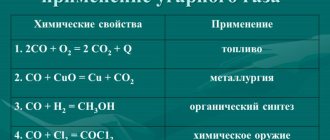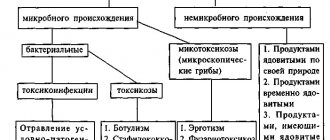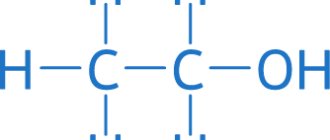Carbon monoxide is carbon monoxide that is formed during combustion of any kind. The operation of heat engines, household stoves, boiler houses, blast furnaces, especially if coal and wood are distilled in them, are sources of carbon monoxide. The danger of this gas is that it is colorless and odorless, so, for example, a fragrance is added to household gas to identify a leak.
Carbon monoxide tends to form a strong bond with hemoglobin, replacing oxygen. A new compound is formed - carboxyhemoglobin. As a result, the supply of oxygen to the body suddenly stops, and the brain is the first to suffer.
Degrees of damage from carbon monoxide
There are mild, moderate, severe and super-heavy, or lightning stages of poisoning. Lightning poisoning can develop if the engine is running in an enclosed space, if the damper on a stove heating is closed and the coals are not burned, or if there is a gas leak in the house through an open burner. With lightning poisoning, a few breaths are enough to lose consciousness, death occurs very quickly, and it is impossible to help the person. Such poisoning occurs if the concentration of carbon monoxide is about 15 mg/l (1.5-2%) or higher.
It is important to know
The process of methane poisoning is quite complex, as are the consequences. In the process of rescuing a person who has been poisoned by this gas, you must remember that lighting a fire in the same room is strictly prohibited. If you are not careful, this can lead to very negative consequences.
Under no circumstances should the victim be given drugs such as morphine or adrenaline.
You need to be careful when performing artificial respiration; you need to place a damp gauze cloth on the victim’s mouth. This is necessary in order not to get hurt yourself.
Only if all the rules are followed can all undesirable consequences be eliminated.
Symptoms of carbon monoxide poisoning
With mild poisoning and with gradually developing poisoning, the following symptoms are observed:
- severe shortness of breath even with slight physical exertion;
- headache and muscle weakness;
- a feeling of slight intoxication (euphoria), tinnitus, visual and hearing impairment;
- nausea, vomiting.
If the poisoning is of moderate severity, all these symptoms are more pronounced and last longer, and loss of consciousness soon occurs, accompanied by suppressed reflexes. Breathing is rapid, the skin and mucous membranes are purple-scarlet, blood pressure is reduced. After the person comes to his senses, drowsiness and memory impairment remain.
In severe poisoning, loss of consciousness lasts several days, and dangerous symptoms of breathing problems are observed. Convulsions may occur and body temperature rises. Death can occur from respiratory arrest. If the dangerous moment is survived, then for several more months it will be necessary to fight pathological changes in the body.
State Autonomous Institution "Regional Clinical Dermatovenerological Dispensary"
Domestic gas poisoning may not be immediately noticeable. It is preceded by the child staying for some time without the control of an adult. Often parents do not even suspect that the cause of their child’s illness is poisoning. Therefore, it is very important to know the possible symptoms in order to be able to recognize poisoning among other ailments and provide timely assistance. First of all, a change in the child’s behavior can prompt thoughts of poisoning: he was just active, cheerful, playing happily, and suddenly he lay down, became lethargic, apathetic, fell fast asleep and does not wake up when trying to wake him up.
Parents should be wary if: - the child falls asleep at an unusual time; - sleeps for a long time during naps for no apparent reason; - inhibited or overly excited, restless; - walks staggering if he has already walked confidently before; - speaks indistinctly, if speech was clear before; - coordination of movements was suddenly impaired; - the child is unusually pale, sweating, or, conversely, the skin is dry and red; — the child’s body temperature is reduced; - the child has excessive salivation or dry mouth; - the pupils are narrowed or excessively dilated, the width of the pupils does not correspond to the lighting (it is known that in bright light the pupils narrow, and in the dark they dilate); More serious symptoms indicating possible poisoning: - confusion, hallucinations; - convulsions, loss of consciousness; - heart rhythm disturbances, weak, frequent or rare pulse; - increase or decrease in blood pressure; - altered, noisy, rapid or rare breathing. In case of poisoning or the slightest suspicion of it: - immediately call an ambulance, take him out into the fresh air, and do not self-medicate under any circumstances; - try to find out the possible cause of poisoning if you do not know it for sure: ask the child, if he can already explain, examine his body, face, clothes for specific odors, stains, redness and burns of the skin and mucous membranes; - inspect the place where he was recently, potentially dangerous places in your home (first aid kit, place where household chemicals are stored). Remember if you used any medications during the day or if you left them in an accessible place. Have you given the child any medications, have you put drops in your nose, were you visiting yesterday or today, or have guests come to see you; - if the child is unconscious, he may suffocate from the retraction of the tongue or from vomit entering the respiratory tract. In this case, it is better to lay the child on his side, monitor his pulse and breathing until the ambulance arrives. If necessary, clean your mouth from vomit with your finger wrapped in a handkerchief and make sure that possible vomiting does not interfere with breathing; - collect the things necessary for the child’s hospitalization; What not to do: You cannot independently induce vomiting in unconscious children and in cases where you have absolutely no idea what the child could have been poisoned with and do not see signs indicating a possible cause. You should not self-medicate for poisoning. In case of poisoning, it is always better to call than not to call a doctor. should not be given without consulting a doctor, even the most seemingly “harmless” ones. For example, milk can be given in case of poisoning with acids and alkalis, but if you dilute the gasoline that enters the body with milk, the poison will be absorbed faster. We must not forget about ourselves. If a child has been poisoned by chemicals or volatile substances, carbon monoxide, before helping him, protect yourself: if necessary, put on gloves, open windows, etc. These measures are a manifestation of care for the child, because if you get hurt, who will help him?
Gas addiction in children
It would seem that the boom in substance abuse has subsided; Moment glue has ceased to be the “leader” among “experimenting” teenagers. Meanwhile, the teenagers themselves, feeling freedom, came up with a new “fashion”.
Today it is “fashionable” to inhale or drink lighter gas.
Why do teenagers choose it? Firstly, it is accessible, you can always buy it freely at any trade pavilion. The low price also plays a role. Secondly, after inhaling the gas, the effect of intoxication quickly sets in.
How can a parent recognize that a child has started breathing some kind of rubbish?
After gas, the child, as a rule, behaves as if drunk, but you will not smell the alcohol. He may also be overexcited or behave aggressively, or, on the contrary, lethargy and apathy may appear - this can also be a sign of using something narcotic. In addition, the child may experience nausea, vomiting, dizziness, even loss of consciousness. There are many fatal gas poisoning cases around the world. After sniffing gas, a teenager cannot control himself and can harm others. Thus, there are frequent cases of murders during group “sniffing”. Think about it: just because your child doesn’t drink or smoke, that doesn’t mean there’s no reason to worry. This type of substance abuse becomes addictive very quickly and does not bring the desired “high” over time. As a rule, if a child has a hard time at home, problems begin at school and with friends. Then he joins a company of similarly dysfunctional guys. They begin to “look for adventure” together. We need to be more attentive to children and their surroundings! Substance abuse is usually experienced by minors, most often between the ages of 8 and 16, who, in search of new sensations and in order to look “cooler” in front of their peers, agree to try some available poison. It is terrible, but almost impossible to protect children from substance abuse. Parents probably don’t even suspect that their children are practically playing with death. Teenagers most often use substance abuse, hiding in secluded places, or doing it at home while their parents are at work. Unfortunately, even doctors cannot immediately determine that a child is a substance abuser. At the same time, under the influence of gases in the body, the functions of the brain and lungs are impaired, bleeding, tissue death of the esophagus and gastrointestinal tract are possible; under unfavorable circumstances, they can cause cardiac arrhythmia, which leads to death within a few minutes. A friendly atmosphere at home and trusting relationships with family are the key to well-being!
Main safety precautions
If you show the slightest signs of methane poisoning, you must leave the room. Those around the patient need to know what safety measures must be followed so as not to harm themselves or the patient. In this case, experts advise:
In a room where there is a high concentration of gas in the air, you cannot light a match or any other object that produces fire, you cannot turn on the light. This can all lead to an explosion;- When providing assistance, it is necessary to take the victim out into fresh air. If for some certain reason assistance had to be provided indoors, then you should have several assistants who will be in the fresh air and will come to the rescue if necessary. This is justified by the fact that you can also inhale gas vapors;
- If the victim has lost consciousness, then you need to bring him back to his senses with the help of cotton wool and ammonia;
- There are situations when the poisoning was mild, but a visit to the doctor had to be postponed for several days. In this case, you need to remember two things: you must visit the doctor, the patient must be given kefir. Kefir is a dairy product that eliminates the effects of toxins.
The condition of methane poisoning is considered to be the most dangerous to human life. Therefore, it is necessary to take such situations seriously.
Prevention measures
In order to minimize the risks of carbon monoxide poisoning, it is enough to follow the following rules:
- operate stoves and fireplaces in accordance with the rules, regularly check the operation of the ventilation system and promptly clean the chimney, and trust the laying of stoves and fireplaces only to professionals;
- do not stay near busy roads for a long time;
- Always turn off the car engine in a closed garage. It only takes five minutes of engine operation for the concentration of carbon monoxide to become lethal - remember this;
- When staying in a car for a long time, and even more so sleeping in a car, always turn off the engine;
- make it a rule - if symptoms arise that suggest carbon monoxide poisoning, provide fresh air as soon as possible by opening the windows, or better yet, leave the room. Do not lie down if you feel dizzy, nauseous, or weak.
Remember - carbon monoxide is insidious, it acts quickly and unnoticed, so life and health depend on the speed of measures taken. Take care of yourself and your loved ones!
Intoxication and methods of combating it
Most often, people resort to detoxification due to addiction. Alcohol and drugs are poisons that poison the body. And it is worth knowing those techniques that, instead of the expected benefit, will cause harm. Here is what the chief narcologist of the Ministry of Health of the Russian Federation, Evgeniy Brun, says about this: “For example, they offer quick opiate detoxifications on the market. The person is put under anesthesia for 72 hours. Through a dropper, the patient is administered a drug - an antagonist of opiate receptors. In theory, abstinence should subside within three days. But the trick is that all this time the body also receives a narcotic load of barbiturates, which, in turn, can cause an increase in organic pathology of the brain. And one more thing: after such procedures, the craving for drugs can be so great that people immediately run away from the clinic to continue injecting drugs.
The same applies to the methods of plasmapheresis and hemodialysis, in common parlance - blood purification. Pathological attraction to drugs or alcohol increases sharply after them.”
Detoxification as part of rehabilitation at the Healthy Stavropol Center
Poisons and toxins are deposited in body tissues regardless of the use of the methods listed above for their removal. And you can get rid of these deposits only with the help of a special step in the rehabilitation program provided in our center.
If a person has taken alcohol or drugs, this step helps to get rid of the hidden effects of these poisons: fatigue, depression, irritability, etc., caused by toxins entering the bloodstream. This is a non-medical detox; no drugs or medical techniques are used. Call us now to learn more about the program!










